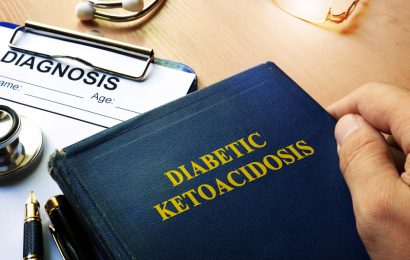One of the main goals of any diabetes control regimen is keeping blood glucose levels in the near-normal range. The cornerstones of most plans to achieve that goal include following a healthy diet, getting regular exercise, and taking insulin or other medicines as necessary.
However, it’s not uncommon for people with diabetes to have other medical conditions that also require taking medicines, and sometimes these drugs can interfere with efforts to control blood glucose. A few medicines, including some commonly prescribed to treat high blood pressure and heart disease, have even been implicated as the cause of some cases of diabetes.
This article lists some of the medicines that can worsen blood glucose control, the reasons they have that effect, the usual magnitude of the blood glucose changes, as well as the pros and cons of using these drugs in people who have diabetes.
Where the problems occur
To understand how various medicines can worsen blood glucose control, it helps to understand how insulin, the hormone responsible for lowering blood glucose, works in the body.
— Learn More About Blood Glucose Management >>
Insulin is released from the beta cells of the pancreas in response to rising levels of glucose in the bloodstream, rising levels of a hormone called GLP-1 (which is released from the intestines in response to glucose), and signals from the nerve connections to the pancreas. The secretion of insulin occurs in two phases: a rapid first phase and a delayed second phase. Both of these phases are dependent on levels of potassium and calcium in the pancreas.
Insulin acts on three major organs: the liver, the muscles, and fat tissue. In the liver, insulin enhances the uptake of glucose and prevents the liver from forming new glucose, which it normally does to maintain fasting glucose levels. In muscle and fat tissue, insulin stimulates the uptake of glucose and prevents the flow of glucose-forming metabolites (products of metabolism) from these tissues to the liver. Insulin does this by interacting with the insulin receptor, a protein that extends from the outside to the inside of liver, muscle, and fat cells.
Once insulin travels from the pancreas via the bloodstream to the target cell, it binds to the receptor on the outside of the cell and starts off signals on the inside of the cell. These signals initiate several of the ultimate actions of insulin, including increasing the number of glucose-transport proteins (proteins that help bring glucose into cells, thereby lowering blood glucose) and increasing the number of enzyme proteins that help break down and use glucose.
The glucose-transport proteins are highly dependent on potassium, and any reduction of potassium in the blood will interfere with the transport of glucose into the cell as well as inhibit insulin secretion in the pancreas, resulting in higher blood glucose. The liver, muscles, and fat tissue are important “sinks” for glucose storage, and anything that interferes with the delivery of glucose to those tissues will tend to raise blood glucose.
As mentioned earlier, the liver can both absorb and produce glucose. Several hormones, as well as drugs, may stimulate the liver’s production of glucose.
Quite a few medicines have been associated with the onset of diabetes or with diminished blood glucose control, but many of them are not commonly used, or the evidence that they raise blood glucose has not been firmly established. However, the following are a few widely used medicines that have been studied extensively and are firmly associated with elevated blood glucose.
Glucocorticoids
One class of medicines that has been shown to raise glucose levels is called the glucocorticoids. This includes such drugs as prednisone, dexamethasone, and triamcinolone. These drugs are called glucocorticoids because they have a profound effect on carbohydrate metabolism. They also have very powerful anti-inflammatory effects and are usually reserved for serious medical conditions that require a substantial reduction in inflammation, such as rheumatoid arthritis, severe asthma, or inflammatory bowel disease.
Glucocorticoids counteract the effect of insulin on the liver and stimulate the production of glucose. They also block the entry of glucose into the muscles and fat tissue by preventing glucose-transport proteins in the cells of those tissues from reaching the cell membrane, where they normally serve to remove glucose from the blood. These drugs have many other serious side effects, including osteoporosis, suppression of the adrenal glands, and cataracts. For these reasons, they are only used when the possible benefits outweigh the risks. Many of these drugs are now available in an inhaled form for asthma or an intranasal form for allergies. These forms of delivery are associated with far fewer side effects than oral forms, including those related to the body’s use of glucose.
Thiazide diuretics
High blood pressure is itself a significant risk factor for Type 2 diabetes, but some of the drugs used to treat it also appear to raise the risk of developing diabetes.
Thiazide diuretics are a class of drugs that treat high blood pressure by blocking the reabsorption of sodium in the kidneys. As part of this process, potassium is also lost in the urine. This results in a lower level of potassium in the blood, a condition known as hypokalemia. Many people who take this type of blood-pressure-lowering drug also need to take potassium supplements to keep their blood levels of potassium in the normal range. As noted earlier, potassium levels are closely linked with both insulin secretion and glucose uptake into muscle and fat tissue.
Multiple studies have looked at the effect of thiazide diuretics on blood glucose levels, and the majority suggest that these drugs tend to raise blood glucose. One relatively recent study was ALLHAT (Antihypertensive and Lipid-Lowering Treatment to Prevent Heart Attack Trial). In this trial, whose results were published in 2006, participants were given one of several different types of medicine to treat their high blood pressure, to try to determine the best type of therapy. Based on a subgroup analysis of approximately 18,000 people without diabetes who were treated and followed for an average of five years, the risk of developing diabetes was slightly higher in those who took a thiazide diuretic (14%) compared to those who took two other types of blood-pressure-lowering drugs, a calcium channel blocker (11.1%) or an angiotensin-converting enzyme (ACE) inhibitor (9.5%).
While this difference may seem small, when these percentages are applied to the millions of people with high blood pressure, many more will develop diabetes on a thiazide diuretic than on a different type of drug. However, choosing a drug to treat high blood pressure is not a simple issue, since ALLHAT also showed that thiazide diuretics were superior to or equally as effective as other classes of blood-pressure-lowering drugs in people with diabetes.
When ALLHAT investigators specifically looked at study participants who had diabetes, they found that these people tended to do well on thiazide diuretics but also had, on average, a small increase in blood glucose (5 mg/dl). Many other large studies have also noted this effect.
The risk of developing diabetes while taking a thiazide diuretic was also evaluated in the Nurses’ Health Study I and II as well as the Health Professionals Follow-Up Study. Between the two studies, a total of 74,816 people who initially did not have diabetes were evaluated. Over the course of treatment with a thiazide diuretic, the risk of developing diabetes was 20% higher in older women (average age 62), 51% higher in younger women (average age 40), and 31% higher in men compared to those in the studies not taking a thiazide diuretic. However, there is evidence that when hypokalemia (low blood potassium) in these people is corrected, blood glucose control improves.
The takeaway message is that thiazide diuretics are considered a good first choice for treatment of high blood pressure because they are effective, cause few side effects, and are inexpensive, but certain individuals may develop diabetes or experience difficulty controlling blood glucose while on a thiazide diuretic. Potassium levels should be monitored and corrected when necessary.
Beta-blockers
Beta-blockers are the other major class of blood-pressure-lowering drugs that have been implicated in causing diabetes or worsening diabetes control. The several large studies that have looked at the risk of diabetes associated with beta-blockers include the Nurses Health Studies I and II and the ongoing ARIC (Atherosclerosis Risk in Communities) study. In these two studies, the risk of developing diabetes in people originally without it who took beta-blockers was approximately 20% to 28% greater than in those who did not take beta-blockers.
This may seem counterintuitive since people with diabetes are often warned that beta-blockers can cause problems with low blood glucose, not high blood glucose. Beta-blockers cause these two problems in distinct ways. First, they may harm a person’s ability to recognize and respond to low blood glucose, mainly by keeping the heart rate slow, which can dampen symptoms of hypoglycemia. They may also inhibit the release of glucose from the liver. But beta-blockers also block the release of insulin by interacting with nerve signals to the pancreas and can thus lower insulin levels even when blood glucose is high.
There is some evidence that not all beta-blockers affect insulin secretion. Beta-blockers work by interacting with proteins in the body called beta receptors. There are several distinct types of beta receptors in the body. Beta-1 receptors are predominantly in the heart, while beta-2 receptors are in the heart as well as the arteries, muscles, liver, and pancreatic beta cells. This means that beta-1–selective drugs are less likely to interfere with the secretion and regulation of insulin.
Several studies have shown that a combination of beta-blockers and thiazide diuretics, as expected, also produces an increase in the risk of developing diabetes, by approximately 20%. The National Institute for Health and Clinical Excellence in the United Kingdom, an advisory group that develops national health policy, has placed a limited caution against the combined use of beta-blockers and thiazide diuretics for people at high risk for diabetes (because of family history, impaired glucose tolerance, or obesity, for example). While the risk of diabetes-related complications for the population as a whole is relatively low, these drugs may be a source of preventable diabetes or of diminished blood glucose control in individual cases.
Of note, ACE inhibitors and calcium channel blockers have not been strongly linked to diabetes.
Niacin
Nicotinic acid, or niacin, is a B vitamin commonly used to lower blood lipids (fats). It can reduce low-density lipoprotein (LDL, or “bad”) cholesterol and triglycerides and also raise high-density lipoprotein (HDL, or “good”) cholesterol. The combination of elevated LDL cholesterol and triglycerides with low HDL cholesterol is a common lipid profile in people with diabetes.
While the drug has many side effects, one of the more important ones is worsening blood glucose control. However, data on the effect of niacin on blood glucose control is not as plentiful as data on diuretics and beta-blockers. One well-controlled study of 148 people with diabetes evaluated the effects of several different doses of niacin on both blood lipids and blood glucose control. The goal of the study was to evaluate the common medical practice of avoiding prescribing niacin to people with diabetes. Fasting blood glucose levels as well as glycosylated hemoglobin (HbA1c, another measure of blood glucose control) levels were evaluated over a 16-week period. While the doses of 1,000 mg and 1,500 mg of niacin were effective for blood lipids, the higher dose resulted in an average increase in HbA1c of 0.3 percentage points, and four people on niacin left the study due to its worsening of blood glucose control. The conclusions of the study were that niacin can be safely used in people who have diabetes, but that once again, in select individuals it can have an adverse effect on blood glucose control.
In another study, niacin was tested in combination with simvastatin, another blood-lipid-lowering drug, in 160 people who had low HDL cholesterol but normal LDL cholesterol. The investigators looked mainly at the progression of lesions in coronary arteries, but they also evaluated blood glucose and insulin levels. Participants who received these two drugs demonstrated a significant reduction in coronary artery lesions and heart attacks. They also, however, had elevated insulin levels but not elevated blood glucose. This suggests that niacin may cause insulin resistance, a condition in which the body does not use insulin efficiently.
In a review article that examined trials of niacin for both cardiovascular benefits and risks pertaining to diabetes care, it was clear that niacin has significant and positive benefits for cardiovascular health (namely, reduced heart attacks) but that small increases in blood glucose and insulin levels occur that may require adjustments to diabetes therapy.
Antipsychotic drugs
Antipsychotic drugs are used to treat severe psychiatric conditions such as schizophrenia. While schizophrenia is not a common disease among people who have diabetes, among people with schizophrenia, there is a 15% prevalence of diabetes and a risk of developing it two to three times that of the general population. Some of this risk may be due to family history, poor diet, and physical inactivity. But recent evidence suggests that some drugs used to treat schizophrenia may increase the risk of developing diabetes.
A consensus statement from the American Diabetes Association and the American Psychiatric Association recognizes that antipsychotic drugs, and in particular olanzapine and clozapine, can elevate blood glucose, cause weight gain, and increase blood lipids. These drugs also raise the risk for diabetic ketoacidosis, an uncommon but extremely serious complication of diabetes. Several hypotheses have been proposed regarding how these drugs may cause diabetes, from simply inducing weight gain to impairing insulin secretion; but so far, no strong evidence explains why these drugs have this effect.
Striking a balance
There is a longer list of drugs associated with diabetes, but the evidence for each of these is not very strong, or the medicine is only used rarely. For the more commonly used drugs that are known to worsen diabetes control, it is important to note that there remains a balance between intended benefits and unwanted side effects. Glucocorticoids can stop an inflammatory process like asthma, thiazide diuretics have been shown to be very successful at reducing high blood pressure and its complications, beta-blockers do protect against heart attacks, niacin does reduce coronary artery disease, and antipsychotic medicines can make the difference between hallucinating and perceiving reality.
If you suspect that your blood glucose control may be adversely affected by a medicine you’re taking, speak with your health-care provider before making any changes. There may be an overall benefit to remaining on a drug that slightly increases blood glucose in some cases, or there may be alternatives that can be substituted. Unfortunately, no medicine is without its drawbacks, but by knowing what these drawbacks are, you can participate in an informed discussion with your health-care provider about the specific risks and benefits of a drug in your unique situation.





